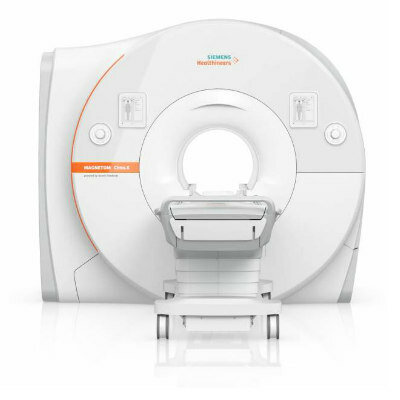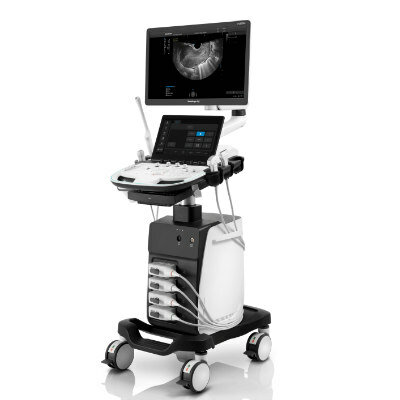Non-Invasive Imaging Technique Accurately Detects Aggressive Kidney Cancer
|
By MedImaging International staff writers Posted on 04 Oct 2024 |
![Image: A kidney showing positive [89Zr]Zr-girentuximab PET and histologically confirmed clear-cell renal cell carcinoma (Photo courtesy of Dr. Brian Shuch/UCLA Health) Image: A kidney showing positive [89Zr]Zr-girentuximab PET and histologically confirmed clear-cell renal cell carcinoma (Photo courtesy of Dr. Brian Shuch/UCLA Health)](https://globetechcdn.com/mobile_medicalimaging/images/stories/articles/article_images/2024-10-04/ca9scan.jpg)
Kidney cancers, known as renal cell carcinomas, account for 90% of solid kidney tumors, with over 81,000 new cases diagnosed annually in the United States. Among the various types, clear-cell renal cell carcinoma is the most common and lethal, responsible for 75% of cases and 90% of kidney cancer deaths. Early detection is crucial, as survival rates significantly drop if the cancer spreads. When diagnosed early, more than 90% of patients survive for at least five years. However, traditional imaging techniques like CT and MRI often struggle to distinguish between benign and malignant tumors, leading to either unnecessary surgeries or delayed treatments. A new study has introduced a non-invasive imaging technique that can accurately detect clear-cell renal cell carcinoma, potentially reducing unnecessary surgeries and ensuring timely, appropriate treatment. The findings, published in The Lancet Oncology, could revolutionize the diagnosis and management of kidney cancer.
In the study led by investigators from the UCLA Health Jonsson Comprehensive Cancer Center (Los Angeles, CA, USA), the research team tested a non-invasive method that uses a monoclonal antibody drug called 89Zr-TLX250, which targets the protein CA9, commonly found in clear-cell renal cell carcinoma. In the phase 3 ZIRCON trial, 332 patients with suspected kidney lesions from 36 hospitals across nine countries participated, with UCLA leading the global recruitment effort. The study's average participant age was 61, with 71% male and 29% female. Patients received injections of 89Zr-TLX250, which binds to the CA9 protein in kidney masses, allowing detection through PET-CT scans. CA9 is expressed in up to 95% of clear-cell kidney cancers, with minimal presence in normal tissue. Days after the injection, PET-CT scans revealed whether the protein was present, helping doctors assess the likelihood of the mass being cancerous based on the attachment of the drug to cancer cells.
The new imaging technique showed high accuracy in identifying cancer, with 85.5% sensitivity and 87.0% specificity, while minimizing false positives. It proved particularly effective in detecting small renal masses (under 2 cm), increasingly found due to frequent abdominal imaging. Additionally, the procedure was safe, with no major side effects from using 89Zr-TLX250. Researchers now plan to investigate whether 89Zr-TLX250 PET-CT imaging can detect distant metastasis in high-risk patients following nephrectomy. This could help guide treatment decisions after surgery, either intensifying adjuvant therapy if cancer is present or sparing patients from unnecessary treatment if not.
“The implications of this research are vast,” said Dr. Brian Shuch, director of the Kidney Cancer Program and the Alvin & Carrie Meinhardt Endowed Chair in Kidney Cancer Research at UCLA, and lead author of the study. “If adopted widely, 89Zr-TLX250 PET-CT imaging could become a new standard in kidney cancer diagnostics, like how PET-CT imaging has revolutionized prostate cancer management. It could also aid in the detection of other types of kidney cancers and help monitor patients at high risk of metastasis.”
Latest General/Advanced Imaging News
- CT Colonography Beats Stool DNA Testing for Colon Cancer Screening
- First-Of-Its-Kind Wearable Device Offers Revolutionary Alternative to CT Scans
- AI-Based CT Scan Analysis Predicts Early-Stage Kidney Damage Due to Cancer Treatments
- CT-Based Deep Learning-Driven Tool to Enhance Liver Cancer Diagnosis
- AI-Powered Imaging System Improves Lung Cancer Diagnosis
- AI Model Significantly Enhances Low-Dose CT Capabilities
- Ultra-Low Dose CT Aids Pneumonia Diagnosis in Immunocompromised Patients
- AI Reduces CT Lung Cancer Screening Workload by Almost 80%
- Cutting-Edge Technology Combines Light and Sound for Real-Time Stroke Monitoring
- AI System Detects Subtle Changes in Series of Medical Images Over Time
- New CT Scan Technique to Improve Prognosis and Treatments for Head and Neck Cancers
- World’s First Mobile Whole-Body CT Scanner to Provide Diagnostics at POC
- Comprehensive CT Scans Could Identify Atherosclerosis Among Lung Cancer Patients
- AI Improves Detection of Colorectal Cancer on Routine Abdominopelvic CT Scans
- Super-Resolution Technology Enhances Clinical Bone Imaging to Predict Osteoporotic Fracture Risk
- AI-Powered Abdomen Map Enables Early Cancer Detection
Channels
Radiography
view channel
AI Detects Fatty Liver Disease from Chest X-Rays
Fatty liver disease, which results from excess fat accumulation in the liver, is believed to impact approximately one in four individuals globally. If not addressed in time, it can progress to severe conditions... Read more
AI Detects Hidden Heart Disease in Existing CT Chest Scans
Coronary artery calcium (CAC) is a major indicator of cardiovascular risk, but its assessment typically requires a specialized “gated” CT scan that synchronizes with the heartbeat. In contrast, most chest... Read moreMRI
view channel
New MRI Technique Reveals Hidden Heart Issues
Traditional exercise stress tests conducted within an MRI machine require patients to lie flat, a position that artificially improves heart function by increasing stroke volume due to gravity-driven blood... Read more
Shorter MRI Exam Effectively Detects Cancer in Dense Breasts
Women with extremely dense breasts face a higher risk of missed breast cancer diagnoses, as dense glandular and fibrous tissue can obscure tumors on mammograms. While breast MRI is recommended for supplemental... Read moreUltrasound
view channel
Wireless Chronic Pain Management Device to Reduce Need for Painkillers and Surgery
Chronic pain affects millions of people globally, often leading to long-term disability and dependence on opioid medications, which carry significant risks of side effects and addiction.... Read more
New Medical Ultrasound Imaging Technique Enables ICU Bedside Monitoring
Ultrasound computed tomography (USCT) presents a safer alternative to imaging techniques like X-ray computed tomography (commonly known as CT or “CAT” scans) because it does not produce ionizing radiation.... Read moreNuclear Medicine
view channel
Novel Bacteria-Specific PET Imaging Approach Detects Hard-To-Diagnose Lung Infections
Mycobacteroides abscessus is a rapidly growing mycobacteria that primarily affects immunocompromised patients and those with underlying lung diseases, such as cystic fibrosis or chronic obstructive pulmonary... Read more
New Imaging Approach Could Reduce Need for Biopsies to Monitor Prostate Cancer
Prostate cancer is the second leading cause of cancer-related death among men in the United States. However, the majority of older men diagnosed with prostate cancer have slow-growing, low-risk forms of... Read moreImaging IT
view channel
New Google Cloud Medical Imaging Suite Makes Imaging Healthcare Data More Accessible
Medical imaging is a critical tool used to diagnose patients, and there are billions of medical images scanned globally each year. Imaging data accounts for about 90% of all healthcare data1 and, until... Read more
Global AI in Medical Diagnostics Market to Be Driven by Demand for Image Recognition in Radiology
The global artificial intelligence (AI) in medical diagnostics market is expanding with early disease detection being one of its key applications and image recognition becoming a compelling consumer proposition... Read moreIndustry News
view channel
GE HealthCare and NVIDIA Collaboration to Reimagine Diagnostic Imaging
GE HealthCare (Chicago, IL, USA) has entered into a collaboration with NVIDIA (Santa Clara, CA, USA), expanding the existing relationship between the two companies to focus on pioneering innovation in... Read more
Patient-Specific 3D-Printed Phantoms Transform CT Imaging
New research has highlighted how anatomically precise, patient-specific 3D-printed phantoms are proving to be scalable, cost-effective, and efficient tools in the development of new CT scan algorithms... Read more
Siemens and Sectra Collaborate on Enhancing Radiology Workflows
Siemens Healthineers (Forchheim, Germany) and Sectra (Linköping, Sweden) have entered into a collaboration aimed at enhancing radiologists' diagnostic capabilities and, in turn, improving patient care... Read more




 Guided Devices.jpg)












.jpeg)



